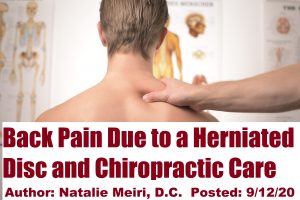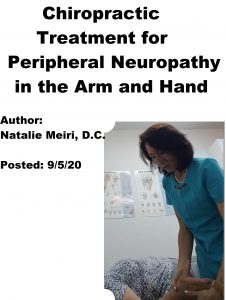
From Dr. Natalie Meiri’s Clinical Pearl Stories: Chiropractic Treatment for Knee Pain and Knee Problems
This was a 53 year old patient who had a chief complaint of right knee pain. To be HIPAA compliant, I will call him Ted instead of his real name. Ted was an avid runner for over 10 years and liked running races. He also enjoyed bicycling, yoga and spinning class (indoor cycling). Unfortunately, he wasn’t able to do these activities without a lot of pain in his right knee. He wanted to get back to doing his activities without pain. So I provided him with Chiropractic Treatment for Knee Pain and Knee Problems.
Ted presented to my office 3 years after arthroscopic partial meniscectomy to his right knee. A meniscectomy is an arthroscopic procedure that removes the meniscus or trims the damaged meniscus tissue (also called a debridement). The knee meniscus is the rubbery knee cartilage that cushions the tibia (shinbone) from the femur (thighbone).
Ted didn’t know exactly how he hurt his knee 3 years ago. It seemed to come on after twisting his knee while lifting a heavy box. Perhaps it was from repetitive running and “old age”. Furthermore, he stated “it never felt better from the surgery and only has gotten worse”. Since the surgery, he has tried dietary and herbal supplementation, acupuncture, physical therapy and yoga. He came to see me since “everything else he had tried didn’t work”. Chiropractic was his last resort!

Ted’s Knee Pain and Problems
Firstly, Ted had pain, swelling and trouble bending his right knee most of the time. Secondly, he also experienced episodes of knee locking wherein he experienced significant pain and was unable to move the leg for a few seconds until his knee was forcefully extended. Lastly, he described a “burning sensation” at the inside of his knee.
His knee x-ray showed osteoarthritis, a degenerative “wear-and-tear” type of arthritis in his knee. His original M.R.I. report from 3 years ago noted a partial meniscal tear. I didn’t need any further imaging at this time. I would order another M.R.I. if there was no improvement in 12 visits.
Upon examination, I found Ted had a saphenous nerve entrapment in his right leg besides from the partial meniscal tear and osteoarthritis. So Ted’s knee pain came from 3 different problems. Nerve entrapment is a medical syndrome that develops when nerves become compressed (or entrapped) and restricted. This occurs due to a variety of causes, from trauma or injury to repeated or overuse activity. Nerve entrapment to the saphenous nerve can occur at the inside of the knee at the adductor canal. The adductor canal is a fibromuscular band canal that the saphenous nerve passes above the knee. This was causing Ted’s pain and burning sensation to the inside of his right knee (saphenous nerve distribution). Occasionally, nerve conduction studies are performed to assess the degree of nerve compression and nerve damage. This was not necessary in Ted’s case since he started getting some relief with treatment within 12 visits.

Ted’s Chiropractic Treatment for Knee Pain and Knee Problems
Ted’s treatments included chiropractic adjustments/ manipulation to his right knee and any associated foot, ankle, hip, pelvic or lumbar (low back) fixations (chiropractic misalignments). Additionally, soft tissue therapy (myofascial release, pressure point and various relaxation procedures) and modalities (cold/heat therapy and electric muscle stimulation) were administered. Finally, he was given homeopathic medicines and therapeutic exercises to continue his treatment at home.
Ted gradually got pain relief and improved function in his activities. It took nearly a year of treatment before Ted was performing his activities pain free. Ted’s knee stopped locking and the burning sensation subsided. He also was able to perform better in yoga class with improved range of motion. Chiropractic proved to be a highly effective last resort!
Meiri Chiropractic serving West Palm Beach, Jupiter, Palm Beach Gardens, and North Palm Beach offers chiropractic treatment for knee pain and knee problems. Dr. Natalie Meiri will examine, diagnose and come up with a treatment plan to get you back to your activities. Call 561-253-8984 today to schedule an appointment.
HOURS AND LOCATION
5601 Corporate Way, Ste. 102
West Palm Beach, FL 33407
Please call 561-253-8984 during regular business hours to make an appointment or for further information.
Mon – Fri
9:00 – 5:00
Sat
9:00 – 1:00












